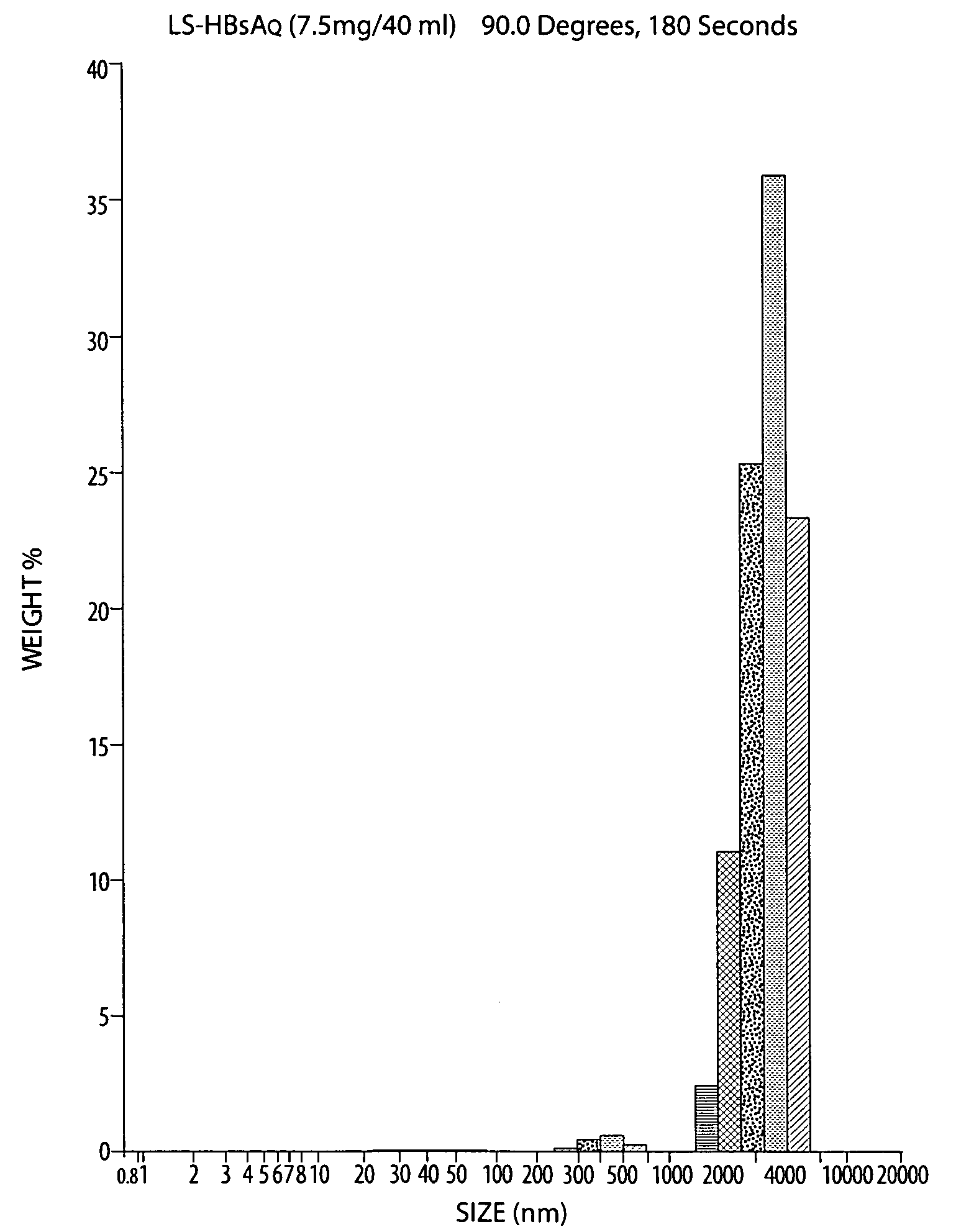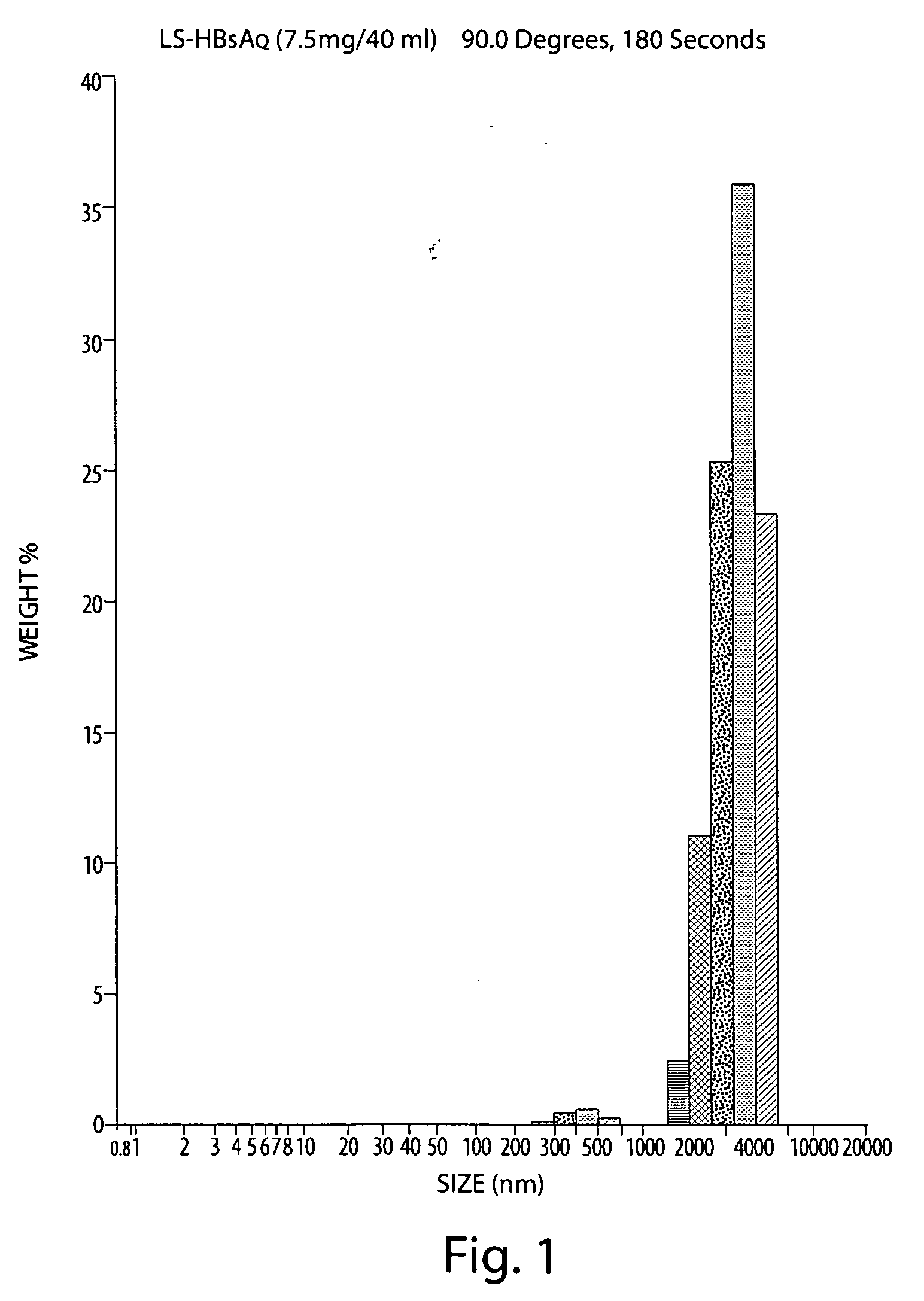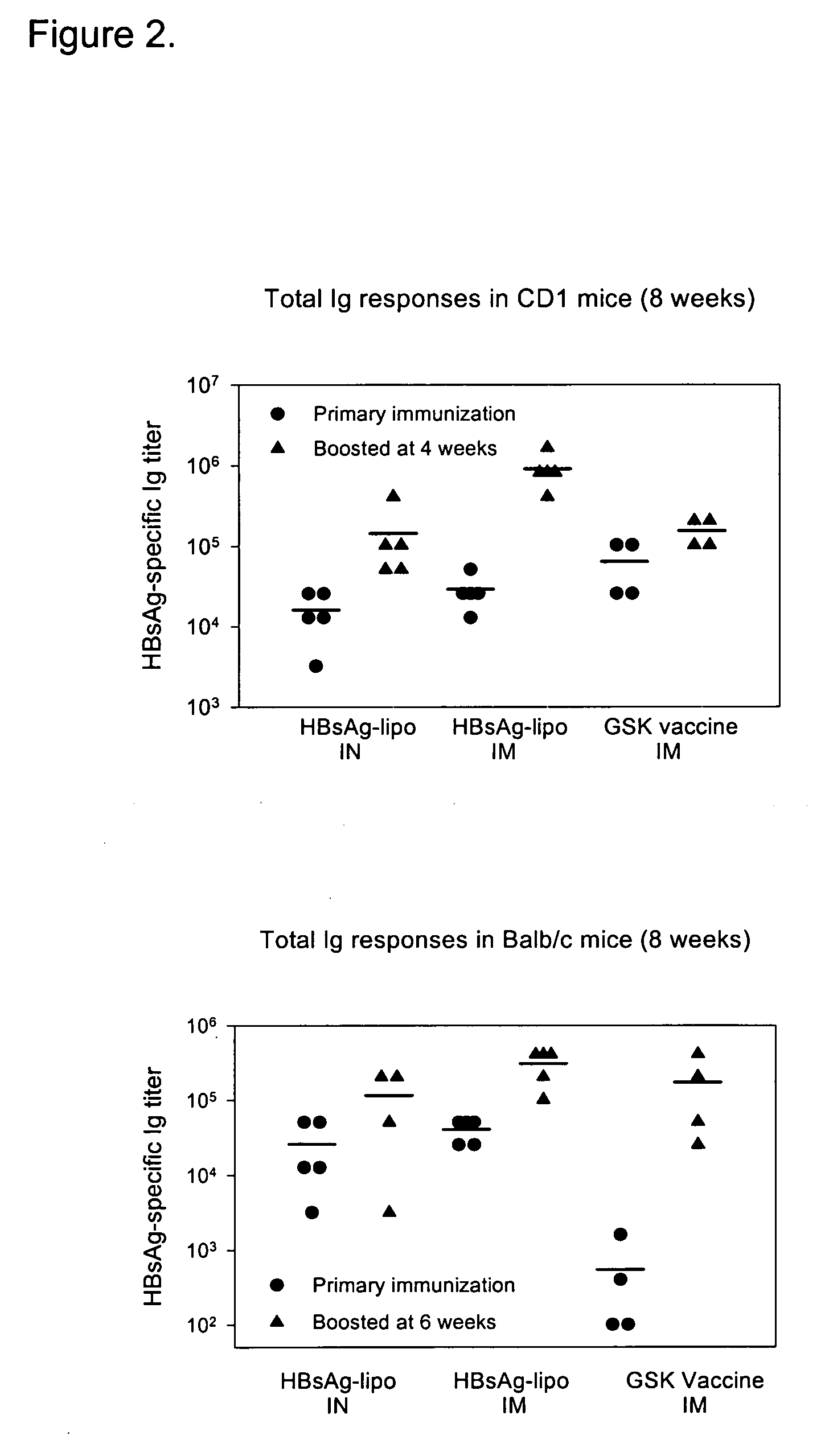Methods for tailoring the immune response to an antigen or immunogen
a technology of immune response and antigen, applied in the direction of antibody medical ingredients, immunological disorders, drug compositions, etc., can solve the problems of unstable passage, poor immunogenic or non-immunogenic materials, and potential risks of using live virus vectored or based vaccines, etc., to achieve enhanced ctl killing activity
- Summary
- Abstract
- Description
- Claims
- Application Information
AI Technical Summary
Benefits of technology
Problems solved by technology
Method used
Image
Examples
example 1
Effect of Prime and Boost Immunization Protocol on Antibody Responses
[0158] To immunize a host animal such as CD1 or Balb / c mice, primary immunization using the subject HBsAg-liposome preparation was administered to the animal on week 0. At week 6, HBsAg-liposome secondary boost immunization was administered.
[0159] To optimize the vaccine delivery platform, we performed several experiments using different immunization strategies, as outlined in Examples 1-5. In this series of experiments, liposomes were sized at 4 μm, a size reported to be effective in stimulating immune responses to protein antigens. Initial experiments tested the following parameters: the effect of one (prime week 0) versus two (prime and boost weeks 0 and 6) rounds of immunization (Example 1), kinetics of the antibody response (Example 2), dose of HBsAg-liposome preparations (Example 3; 3 μg or 15 μg / mouse), route of administration (Example 4; intranasal or intramuscular), and physical form of the vaccine (Exam...
example 2
Kinetics of Antibody Responses in CD1 Mice after Intranasal (IN) Immunization with BBsAg Encapsulated in Liposomes (HBsAg-liposomes)
[0166]FIG. 3 illustrates the serum titer of HBsAg-specific antibodies after immunizing CD1 mice intranasally with 15 μg of HBsAg-liposome. A significant boost in titer of HBsAg-specific antibody was observed if a second boost administration of the same Ag preparation was used. Without boost administration, however, titer reached its peak at about 4 weeks post the initial immunization, and stayed at similar levels through week 8. In addition, 15 μg of HBsAg-liposome is at least as effective as the commercially available GSK vaccine at 3 μg dosage.
example 3
Dose Response to HBsAg-liposomes
[0167] CD1 mice were immunized, with or without a second boost administration, with either 3 μg or 15 μg of HBsAg encapsulated in the liposome preparation. FIG. 4 shows that 15 μg of HBsAg-liposome was at least as effective as the commercially available GSK vaccine (3 μg). However, 3 μg of HBsAg in the same liposome preparation was significantly less effective, and a second boost administration did not appear to result in a significant increase in titer.
PUM
| Property | Measurement | Unit |
|---|---|---|
| size | aaaaa | aaaaa |
| diameter | aaaaa | aaaaa |
| sizes | aaaaa | aaaaa |
Abstract
Description
Claims
Application Information
 Login to View More
Login to View More - R&D
- Intellectual Property
- Life Sciences
- Materials
- Tech Scout
- Unparalleled Data Quality
- Higher Quality Content
- 60% Fewer Hallucinations
Browse by: Latest US Patents, China's latest patents, Technical Efficacy Thesaurus, Application Domain, Technology Topic, Popular Technical Reports.
© 2025 PatSnap. All rights reserved.Legal|Privacy policy|Modern Slavery Act Transparency Statement|Sitemap|About US| Contact US: help@patsnap.com



